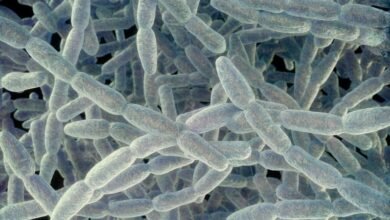Unveiled: Deep-Rooted Environmental Crisis in Watts – A Jaw-Dropping ‘Toxic Tour’ Exposes All!

The Watts Community: A Toxic Legacy and the Fight for Environmental Justice
The Watts community in Los Angeles has long been a focal point for discussions surrounding environmental health concerns and social equity. In recent events, local leaders have taken significant steps to bring to light the longstanding issues faced by their neighborhoods, culminating in what has been termed a ‘toxic tour.’ This initiative seeks not only to raise awareness but also to galvanize action to address the environmental injustices that have plagued this vibrant community for decades. This blog will delve deeper into these issues, examining the community’s history, the current environmental health concerns, and the initiatives being undertaken to create a healthier and more equitable future for Watts.
The Historical Context of Watts
Watts is an area steeped in a rich cultural history, once a thriving community characterized by its vibrant neighborhoods and proud residents. However, it has also been marked by significant social and economic challenges. The infamous Watts Riots of 1965 serve as a pivotal moment in this community’s history, highlighting the deep-seated racial tensions and systemic inequities that exist in urban America. Over time, these challenges have been compounded by environmental factors that have significantly impacted the public health of its residents.
Understanding Environmental Health Concerns
Environmental health encompasses how our environment influences human health outcomes. In Watts, various factors contribute to the community’s health crisis, including poor air quality, proximity to hazardous waste sites, and inadequate access to clean water. These concerns are not merely abstract; they manifest in alarming rates of respiratory illnesses, lead poisoning, and other chronic health conditions that disproportionately affect vulnerable populations.
Air Quality: The Silent Killer
One of the primary health issues facing Watts is poor air quality, largely attributed to pollution from nearby industrial facilities and heavy traffic congestion. High levels of particulate matter and toxic emissions have made Watts one of the areas with the highest rates of asthma and other respiratory conditions. Residents, especially children, are bearing the brunt of these health challenges, leading to a call for comprehensive action and policy reform.
Proximity to Hazardous Waste Sites
The presence of numerous hazardous waste sites, some of which have been inactive for years, continues to be a pressing concern for Watts residents. These sites pose serious health risks due to soil and groundwater contamination. Community leaders have expressed frustration that many of these sites are situated close to homes, schools, and parks, making it challenging for families to access safe and clean environments. This disconnect highlights the urgent need for more rigorous regulations and community engagement in environmental decision-making.
Water Quality and Access
Access to clean and safe drinking water is another critical issue. Many residents report concerns about the quality of their water supply, with some instances of lead contamination. Such issues are often exacerbated by outdated infrastructure and a lack of investment in public utilities. For an already marginalized community, these challenges can lead to severe long-term health impacts.
The Toxic Tour: Highlighting Environmental Injustice
The recent ‘toxic tour’ is an initiative led by community leaders aimed at drawing attention to these pressing environmental health issues. Participants included local activists, residents, and public health officials who toured various sites within Watts to highlight the areas most affected by pollution and environmental hazards. The tour serves multiple purposes: it educates participants, amplifies the voices of community members who have been adversely affected, and helps to forge a path toward tangible solutions.
Community Voices and Advocacy
Central to the toxic tour is the role of community voices in shaping the narrative. Leaders expressed that resident testimonies play a crucial role in outlining the direct impact of environmental hazards on daily life. This grassroots approach fosters a culture of advocacy where residents can share their stories and galvanize support for necessary changes. By bringing these narratives to the forefront, community leaders are striving to engage with larger systemic issues and push for accountability from both local and federal government representatives.
Strategies for Change
As the voices of Watts echo louder, several strategies have begun to take shape in the pursuit of environmental justice. Community leaders are working on initiatives that combine advocacy, education, and policy reform to address the identified environmental health risks.
Policy Advocacy
One of the main strategies involves advocating for stronger regulations to minimize emissions from nearby industrial sources. Community leaders are lobbying for more stringent air quality standards and increased monitoring to protect public health. Through efforts to engage with policymakers, community members are crafting action plans that include establishing more green spaces and improving local infrastructure.
Educational Programs
Education is also a crucial aspect of the movement toward change. Local organizations are focusing on educating residents about environmental health risks and providing resources on how to advocate for themselves. Workshops and community meetings serve as platforms for sharing knowledge, turning residents into informed advocates capable of challenging the status quo.
Collaborative Initiatives
Collaborations with environmental organizations and health agencies are essential for bringing resources to the community that can help mitigate the impact of environmental hazards. By building partnerships, Watts can leverage outside expertise and funding to implement community-driven projects aimed at cleaning up toxic sites, improving air quality, and ensuring safer water supplies. This collaborative effort not only provides much-needed assistance but also empowers residents through active participation.
The Road Ahead
The struggle for environmental justice in Watts is ongoing, but the commitment of its community leaders and residents remains steadfast. By integrating advocacy, education, and collaborative efforts, they are slowly but surely making progress toward a healthier future. The toxic tour serves as a testament to their resilience and determination to advocate for their rights and improve their living conditions.
As this movement continues to gain momentum, it’s crucial for stakeholders at all levels—from policymakers to residents—to remain engaged and responsive to the needs of the community. Only through collective efforts can Watts hope to overcome the legacy of environmental injustice that has persisted for too long.
Conclusion
In conclusion, the Watts community stands as a powerful symbol of resilience and activism in the face of environmental injustice. Through initiatives like the ‘toxic tour,’ local leaders are shining a light on critical health concerns that have impacted their community for generations. While significant challenges remain, the commitment to advocacy and change fosters hope for a healthier future for all residents. As awareness grows and action is taken, Watts embodies a movement toward environmental justice that other communities facing similar struggles can look to for inspiration.
Summary
- The Watts community has a historical background intertwined with racial tensions and systemic inequities.
- Environmental health concerns include poor air quality, hazardous waste sites, and water contamination.
- The ‘toxic tour’ aims to raise awareness about environmental hazards and amplify community voices.
- Community leaders are advocating for policy reforms, education initiatives, and collaborative projects to address environmental justice issues.
- The fight for environmental justice in Watts continues to move forward, reflecting the community’s resilience and dedication to creating a better future.





